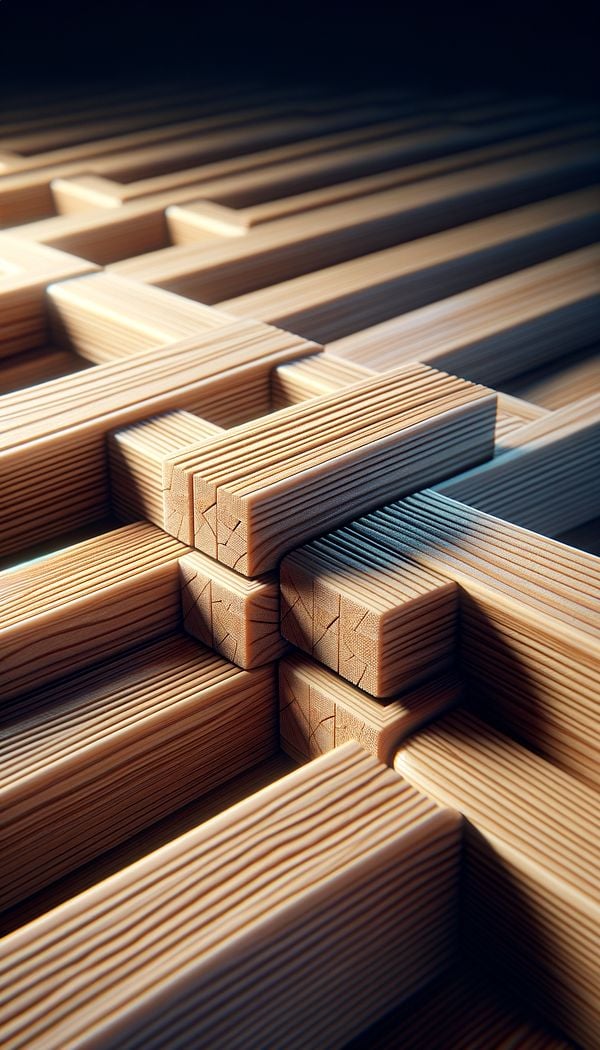What is End Matching?
End matching refers to a technique used in the installation of wood flooring and paneling.
Description
End matching is a technique frequently employed in the installation of wood flooring, paneling, and sometimes in ceilings. It involves precisely cutting the ends of wood planks so that they fit seamlessly together, typically in a tongue and groove joint. This not only ensures a smooth and continuous appearance but also adds structural integrity to the overall installation.
By using end matching, installers can connect planks end-to-end without needing to align them with supporting joists or studs. This can lead to less waste, as shorter pieces can easily be used and joined together. The process also facilitates a quicker, more efficient installation process, while minimizing gaps and potential for movement between planks over time.
This technique is often used in both residential and commercial projects to create surfaces that have a refined, cohesive look. Especially in high-quality wood installations where aesthetics are a primary concern, end matching plays a crucial role in achieving the desired outcome.
Usage
End matching is often applied in constructing hardwood floors and wood-paneled walls or ceilings. For instance, in high-end residential homes, end-matched wood flooring can provide a luxurious, seamless look that flows gracefully from room to room. Similarly, in commercial spaces like offices or restaurants, end-matched paneling can add an element of sophistication and continuity.
FAQs
-
Is end matching exclusive to wood materials?
Primarily, end matching is used with wood materials, but the concept could be adapted for use with other types of flooring or paneling that benefit from interlocking ends.
-
Do all types of wood flooring require end matching?
Not all wood flooring types require end matching; it's more common with solid and engineered wood planks. Other types of flooring, like laminate, may have their joint systems.
-
Can end matching be done DIY, or does it require professional installation?
While DIY-savvy individuals might undertake end matching, professional installation is recommended for optimal results, especially for expensive materials.
Practical Application
When considering end matching for a project, it’s essential to select the right type of wood and ensure that the ends of the planks are cut precisely for a perfect fit. Planning the layout beforehand can also help minimize waste and ensure a smooth installation process. Using specialized tools and equipment, like a table saw with a fine blade, can help achieve accurate cuts.
-
Architectural Elements199 articles
-
Fabrication & Craftsmanship133 articles
-
Materials & Textiles360 articles
-
Construction & Building86 articles
-
Flooring & Carpets48 articles
-
MohairMohair is a luxurious, durable fabric made from the hair of the Angora goat.
-
Modern StyleModern style in interior design refers to a design movement that emphasizes simplicity and function, incorporating sleek lines and a minimalist aesthetic.
-
PlasterPlaster is a building material used for coating, protecting, and decorating walls and ceilings.
-
Asian Zen StyleAsian Zen Style is a tranquil and minimalist interior design approach influenced by the simplicity and natural elements of Zen philosophy.
-
Louis XIIILouis XIII is a style of interior design and architecture originating in France during the reign of King Louis XIII.
